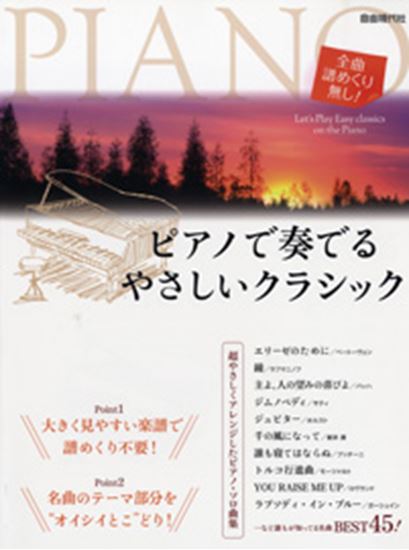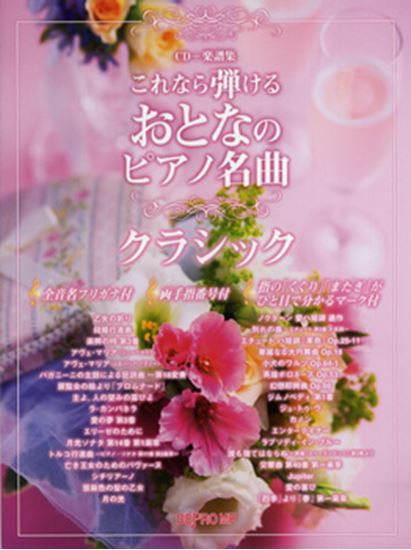Mussorgsky, Modest Petrovich : Tableaux d'une exposition
Work Overview
Instrumentation:Piano Solo
Genre:suite
Total Playing Time:29 min 40 sec
Copyright:Public Domain
Commentary (4)
Author : Minami,Kyoka
Last Updated: July 3, 2025
[Open]
Author : Minami,Kyoka
We have released a commentary video by Kyoka Minami, Grand Prix winner of the 2024 Special Grade.
In the video, Ms. Minami herself reflects on her performance of Mussorgsky's Suite 'Pictures at an Exhibition' from the Special Grade Semifinal held on August 18, 2024, discussing what she felt during the performance, points she particularly focused on, and her deep thoughts on this piece.
https://youtu.be/r4ZzKuRFbWo?si=4OhWHXF2vv4S8naR
Author : Kogure, Yukiko
Last Updated: January 20, 2014
[Open]
Author : Kogure, Yukiko
Mussorgsky was a member of the well-known "Mighty Handful" (often referred to as "The Five" in Japan, in analogy to "Les Six" in France).
Pictures at an Exhibition was composed under the influence of the posthumous exhibition of his friend Viktor Hartmann (whose name is widely pronounced "Hartmann" in Japan). As pointed out by Japanese musicologist Fumiko Ichiyanagi, the original title means "Pictures from an Exhibition." It is not a direct musical depiction of Hartmann's paintings, but rather a work inspired by them.
The composition period was from June 2 to 22, 1874. However, the first edition of the score was published in 1886, ten years after its composition. This score was edited by Nikolai Rimsky-Korsakov and published in Saint Petersburg.
The work is dedicated to Vladimir Stasov. Stasov was the one who gave the name "The Mighty Handful" to "The Five" and had a particularly strong connection with Mussorgsky. His achievements also include assisting in the production of the opera Khovanshchina and naming the song cycles The Nursery and Songs and Dances of Death.
Furthermore, regarding the sixth movement, "Samuel Goldenberg and Schmuÿle," Stasov identified Mussorgsky's "anti-Semitic" ideology. Incidentally, "Samuel" is a wealthy Jew symbolized by the domineering melody that begins in the first measure. On the other hand, "Schmuÿle" is a shabby and poor Jew symbolized by the triplet figure appearing in the right-hand part in the ninth measure.
Although "Samuel" and "Schmuÿle" are depicted as having completely different personalities, they are in fact merely different pronunciations of the same name. The former is a European name, while the latter is a Yiddish name (i.e., a Jewish name). Therefore, it can be interpreted that this title implicitly suggests that even Jews who have settled in various parts of Europe and acquired wealth are, at their root, of truly poor origins. The fact that "anti-Semitic" opinions are scattered throughout Mussorgsky's letters from the time Pictures at an Exhibition was composed also supports this interpretation.
Author : Itoh, Midori
Last Updated: November 15, 2013
[Open]
Author : Itoh, Midori
Mussorgsky: Suite "Pictures at an Exhibition"
In 1873, Viktor Hartmann (also pronounced "Gartman" in Russian, 1842-1873), a radical architect and painter, died at a young age. Mussorgsky, who had been a close friend since they met four years prior, was deeply shocked by this event. It is said that the inspiration for this suite came from seeing the numerous sketches, architectural plans, and designs left by Hartmann at a posthumous exhibition held at the St. Petersburg Academy of Arts in January of the following year.
According to later research, it is difficult to say that Mussorgsky composed all the pieces in the suite as faithful impressions of Hartmann's posthumous works, as the pieces corresponding to Nos. 2, 4, and 7 are not found in the exhibition catalog, and the original artworks for Nos. 1, 3, and 8 are unknown. Rather, it can be said that the pieces were inspired by all the artworks he had seen, including Hartmann's works.
Today, it is often performed in Ravel's orchestral arrangement, and the focus tends to be on its picturesque descriptions, richness of expression, and nationalistic content. However, there is no doubt that it is a remarkable work as one of the original piano compositions produced in 19th-century Russia.
Promenade
With alternating 5/4 and 6/4 time signatures, a simple yet powerful theme appears from the beginning. This is based on a Russian mode and represents "Mussorgsky walking through Hartmann's posthumous exhibition." In other words, this "Promenade" is inserted between pieces, changing its form, to depict Mussorgsky moving from one picture to the next. It is also interesting that in the orchestral version, each "Promenade" is played by different instruments.
I. Gnomus
Played continuously after the "Promenade" without a break. A Gnomus is a dwarf-like goblin from Russian fairy tales, said to move around in a strange manner while guarding treasures deep underground. This cunning and mischievous dwarf was popular among Russians of the time. Mussorgsky's "Gnomus" gives a somewhat grotesque impression. It begins with a motif that depicts a strange gait and a somewhat gloomy atmosphere deep underground, eventually becoming a heavy sound that seems to portray their painful emotions.
II. Il vecchio castello (The Old Castle)
After a slightly gentler "Promenade" than the opening one, the scene shifts to a medieval fantasy. As the title suggests, a troubadour is likely singing while playing a lute in front of an "old castle." From beginning to end, the melancholic figuration played by the left hand is the very sound of a lute. In the orchestral version, this left-hand part is played by the bassoon, and the sweet melody in the right hand by the alto saxophone.
III. Tuileries - Dispute d'enfants après jeux (Tuileries - Children's Quarrel after Play)
Tuileries is the name of a park in the center of Paris. Even today, it is a popular place for children to play and for their parents to relax. This piece, following a weighty "Promenade," depicts the public arguments of children tired from playing in Tuileries Garden. The dizzying motif at the beginning represents the children chattering and arguing, and although a slightly calmer motif (measure 14) appears briefly in the middle section, it quickly reverts to a tumultuous scene. It is an enjoyable piece with childlike depictions.
IV. Bydlo
Bydlo means "cattle" or "herd of cattle" in Polish, but listening to this piece, which is consistently heavy and dark in tone, one might realize that it is not merely a depiction of a "herd of cattle." The word also carries the meaning of "(Polish) people oppressed like livestock." This piece might be an expression of sympathy for "oppressed people" and their dark, intense emotions. However, presenting this work as such was taboo in Russia at the time. In fact, Mussorgsky's autograph score showed traces where he had scraped off the original title with a knife and rewritten it. When asked about its meaning by Stasov (1824-1906, a renowned art critic), he reportedly replied, "Let's just say it's 'an ox-cart' here."
V. Ballet de poussins dans leurs coques (Ballet of the Unhatched Chicks)
A Promenade that inherits the melancholic lingering sound of the fourth piece, its concluding section features the "chick" chirping motif of this work, played like a premonition, leading into this piece. Today, it is the most popular and frequently performed piece in this suite. The original artwork for this piece is clearly a costume design for the ballet "Trilby," and the music is highly descriptive. The opening theme expresses the chirping and jerky movements of chicks, while the trio section in the latter half has a humorous sound, like ballet music.
VI. Samuel Goldenberg und Schmuyle
As indicated by its subtitle, "Two Jews – One Rich, One Poor," this piece depicts a conversation between Samuel Goldenberg, a wealthy and arrogant man, and Schmuyle, a poor and humble man. It is interesting that the two characters have typical Jewish names, and this piece alone has a German title.
First, the pompous opening theme is likely Goldenberg. Then, from measure 9, Schmuyle begins to chatter with rapid notes. Eventually, Goldenberg's intimidating voice (from measure 15) resounds in the bass, depicting him overwhelming Schmuyle.
VII. Limoges, le marché (Limoges, the Market)
Following a "Promenade" at the same tempo as the opening one (sometimes omitted in arranged versions), it begins attacca. Although there is no corresponding painting for this piece, it can be interpreted as depicting the conversations of women gathered at a market and the bustling activity of people passing by. The continuous sixteenth-note rhythm is characteristic, and in the orchestral version, the constant switching of instruments to play the motif expresses this busyness.
VIII. Catacombae - Sepulcrum romanum (Catacombs - Roman Sepulchre)
Catacombs are underground burial places for Christians persecuted during the Roman era. It is thought to be based on a painting depicting Hartmann himself exploring them with a lamp, but whether that painting actually existed is unknown. However, the succession of heavy chords, reminiscent of the fourth piece, feels somewhat eerie and at times even depicts anger. Despite being a short piece of 30 measures with a wide range of dynamic changes, it leaves a profound lingering impression.
What follows is the section titled "Con mortuis in lingua mortua" (With the Dead in a Dead Language). It is a variation of the "Promenade," likely expressing a feeling of being unable to escape the lingering atmosphere of the "Catacombs." The transition from heavy, somber harmonies to gradually brighter ones, while the right hand plays a tremolo, is striking.
IX. La cabane sur des pattes de poule (The Hut on Fowl's Legs)
Although seemingly a strange title, the original artwork was a clock design depicting a grotesque two-legged chicken serving as a base, upon which Baba Yaga's hut stood. Baba Yaga is also a witch from Russian fairy tales, and Mussorgsky seems to have expanded his imagination regarding this witch.
At the beginning, the music starts with a sharp, pounding motif. Its intensity then continuously grows, becoming a fierce theme with repeated chords. While it might seem like an eerie clock ticking, the unsettling presence of the witch also creates a unique worldview as a theme for the entire piece.
X. La grande porte de Kiev (The Great Gate of Kiev)
This piece, played continuously from the ninth piece, is said to have been inspired by the architectural plans for a grand gate to be built in Kiev. It begins with the weighty main theme of the suite, reminiscent of the "Promenade," and builds to a grand climax. Then, suddenly, from measure 31, a quiet, chorale-like music flows. This might be a song of praise for his close friend Hartmann and his talent. The opening theme and this chorale-like theme intertwine, repeating in grand variations, and finally, the opening theme returns once more in a coda section that seems to unleash unprecedented energy, bringing the suite to a magnificent close.
Author : Saitoh, Noriko
Last Updated: November 1, 2007
[Open]
Author : Saitoh, Noriko
The suite, subtitled "In Memory of Viktor Hartmann," was composed by Mussorgsky at the age of 35, inspired by a posthumous exhibition held in tribute to his friend, the painter Hartmann (1834-1873), who died prematurely at 39. It was completed in three weeks in June 1874, a remarkably fast pace compared to the time taken for his other works. The publication, edited by Rimsky-Korsakov, took place in Saint Petersburg in 1886, five years after Mussorgsky's death. During this process, many of Mussorgsky's unique compositional techniques were "corrected" as errors, and the publication of the original version had to wait until the complete works of Mussorgsky in 1931. This suite is widely known through orchestral arrangements by Ravel and Rimsky-Korsakov.
Promenade
Marked Allegro giusto, nel modo russico, senza allegrezza, ma poco sostenuto, it features a mixture of 5/4 and 6/4 time signatures. It depicts Mussorgsky walking through Hartmann's posthumous exhibition. This fragment, strongly emphasizing Russian modes, is inserted at various points, often in altered forms. Initially, only the melody is presented as a single line, then it is elaborated with a thick texture, layered in octaves and chords.
Gnomus
It follows attacca from the Promenade. This piece is believed to be inspired by a sketch depicting a gnome walking somewhat awkwardly with crooked legs. The original word "Gnomus" refers to an "earth spirit" in the form of a dwarf. It begins with a low-register unison played by both hands. The piece is filled with high tension.
Promenade (unmarked)
Although not explicitly titled "Promenade," the Promenade that began the suite is inserted here, starting on a different note. It is marked Moderato comodo assai e con delicatezza. This quiet passage features many "p" dynamic markings.
The Old Castle
It follows attacca from an inserted section with Promenade elements. Marked Andantino molto cantabile e con dolce, it is written in 6/8 time. The piece begins with low, resonant open fifths. A melancholic melody is sung over this accompaniment.
Promenade (unmarked)
Although not explicitly titled "Promenade," a section with its elements is inserted here. Again, it starts on a different note. Furthermore, while the first "Promenade" of the suite is 24 measures long, the second "Promenade" inserted before "The Old Castle" is 12 measures, and this time it is 8 measures, indicating a shortening of its length. Here, it is marked Moderato non tanto pesantemente.
Tuileries (Children Quarreling after Play)
It follows attacca from an inserted section with Promenade elements. This piece, marked Allegretto non troppo capriccioso, is believed to be inspired by a painting depicting the tree-lined avenues of the Tuileries Garden in Paris, filled with many children and a governess. Compared to the preceding music, it is characterized by a light rhythm. Additionally, the scalar melodic movements seen in various places contribute to the piece's driving force.
Bydło
This is the music of a Polish ox-drawn cart. "Bydło" in Polish means "cattle" or "human-like cattle," suggesting the "drudgery" of pulling this enormous and heavy vehicle. This piece, marked Sempre moderato pesante, began with "pp" in Rimsky-Korsakov's edited version due to his alterations. However, in the original version, it begins with "ff," expressing the oppressive heaviness more directly. The main line is played robustly in the low register or resonates in the high register, layered in octaves and chords. In either case, dense chords in the low register are continuously reiterated in eighth notes.
Promenade (unmarked)
Although not explicitly titled "Promenade," a section with its elements is inserted here. What is particularly noteworthy here is that its melody begins mid-phrase, as if dragged down and suppressed by "Bydło." It is marked Tranquillo. This Promenade, which mixes 6/4 and 7/4 time signatures, becomes 3/4 in the final measure.
Ballet of the Unhatched Chicks
It follows attacca from the previous piece. This piece is believed to be inspired by Hartmann's illustrations for the stage performance of the ballet "Trilby," depicting canary chicks dancing, clad in eggshells like armor. In this piece, marked Scherzino vivo, leggero, the soft pedal is continuously depressed. The music is carried solely in the high register, passing by like a fleeting breeze.
Samuel Goldenberg and Schmuÿle
It follows attacca from "Ballet of the Unhatched Chicks." At the time this suite was written, Samuel Goldenberg was considered a typical name for a wealthy Jew in Saint Petersburg, while Schmuÿle was a typical name for a poor Jew. In this piece, marked Andante grave, energico, the rhythm, skillfully combining dotted notes and tuplets, is characteristic. Furthermore, repeated single notes and repeated notes in octaves contribute to creating a unique atmosphere.
Promenade
Since the beginning of this suite, sections based on the Promenade have been inserted at various points, but none were explicitly titled as such until now. What is particularly noteworthy here is that it does not begin with a single note but is layered in unison by both hands. Also, the marking at the beginning, Allegro giusto, nel modo russico, poco sostenuto, is almost identical to the "Promenade" that began the suite. The starting note also corresponds to the opening "Promenade," and it begins with "f."
Limoges. The Market (The Great News)
It follows attacca from the "Promenade." This piece is believed to be inspired by a painting depicting French women fiercely arguing in a market in Limoges, an old city in southwestern France. In this piece, marked Allegretto vivo, sempre scherzando, "f" is the predominant dynamic, and the frequent sforzandos convey the lively bustle of the market.
Catacombs (Roman Tomb)
Catacombs are communal burial grounds dug underground. Although "Roman" is specified, the painting that inspired this piece is believed to depict Hartmann himself gazing intently at the Paris catacombs with lantern light. This piece, marked Largo, is written in 3/4 time and primarily consists of dotted half notes. It is also often accompanied by fermatas. The dynamic changes are wide-ranging, and despite being only 30 measures long, it leaves a profound and memorable impression.
Con mortuis in lingua mortua (With the Dead in a Dead Language)
It follows attacca from "Catacombs (Roman Tomb)." In the autograph manuscript, the phrase for this piece, "Con mortuis in lingua mortua," is merely appended as a very small note. It is written in Latin. Although marked Andante non troppo, con lamento, the time signature is not explicitly stated. Nevertheless, six quarter notes are regularly arranged in each measure. This piece, only 21 measures long, also leaves a profound impression with the deep sound of "pp" tremolo, similar to the preceding "Catacombs (Roman Tomb)."
The Hut on Fowl's Legs (Baba-Yaga)
In Hartmann's sketch, which is believed to have inspired this piece, a clock in the shape of a witch's hut stands on fowl's legs. Mussorgsky added "Baba-Yaga," who travels in a mortar. "Baba-Yaga" is a gaunt sorceress who lives in the forest, catches people, and eats their flesh; she is said to travel in an iron mortar, propelling herself with a pestle and sweeping away her tracks with a broom. The original title of this piece also means "a rickety hut that could be blown away." This piece, written in 2/4 time and marked Allegro con brio, feroce, largely builds a homophonic texture primarily based on unison in both hands. In sections that do not conform to this, it covers a very wide range. From the latter half, it becomes Allegro molto, and the driving force increases further.
The Great Gate of Kiev (in the Capital City, Kiev)
It follows attacca from "The Hut on Fowl's Legs (Baba-Yaga)." Hartmann's preliminary sketch, which is believed to have inspired this piece, depicts a gate for the city of Kiev in an Old Russian stone architectural style, with Slavic helmet-shaped domes. However, this design was ultimately never realized. Hartmann's primary profession was an architect, and he also worked on stage designs and costume designs, not just sketches and watercolors. It is marked Allegro alla breve, maestoso con grandezza. It is the largest in scale within the suite, and its musical content can be described as grand. Overall, the sound is created by massive chords, and octaves are also frequently used. From the latter half, it becomes Meno mosso, sempre maestoso, and in the concluding section, it becomes Grave, sempre allargando, concluding the entire suite with a magnificent sound.
Movements (11)
No.3 "Tuilleries - Dispute d'enfants apres jeux"
Total Performance Time: 1 min 10 sec
No.5 "Ballet de poussins dans leurs coques"
Total Performance Time: 1 min 20 sec
No.6 "Samuel Goldenberg und Schmuyle"
Total Performance Time: 2 min 20 sec
No.8 "Catacombae - Sepulcrum romanum"
Total Performance Time: 2 min 00 sec
No.9 "Die Hutte auf Huhnerfussenen (Baba-Jaga)"
Total Performance Time: 3 min 30 sec
No.10 "La grande porte de Kiev"
Total Performance Time: 6 min 00 sec
Arrangements & Related Works(3) <Show>
Matsumoto, Asuka: 展覧会の絵~one love~
Total Performance Time: 5 min 50 sec
PTNA & Partner Channel Videos(45items) View More
- favorite_border
- 2
Recording Date: 2024/8/18
Recording Location: 第一生命ホール(2024年ピティナ・ピアノコンペティション 特級 セミファイナル)
- favorite_border
- 0
Recording Date: 2024/8/18
Recording Location: 第一生命ホール(2024年ピティナ・ピアノコンペティション 特級 セミファイナル)
- favorite_border
- 0
Recording Date: 2024/8/18
Recording Location: 第一生命ホール(2024年ピティナ・ピアノコンペティション 特級 セミファイナル)
- favorite_border
- 0
Recording Date: 2024/8/18
Recording Location: 第一生命ホール(2024年ピティナ・ピアノコンペティション 特級 セミファイナル)
- favorite_border
- 0
Recording Date: 2024/8/18
Recording Location: 第一生命ホール(2024年ピティナ・ピアノコンペティション 特級 セミファイナル)
- favorite_border
- 0
Recording Date: 2024/8/18
Recording Location: 第一生命ホール(2024年ピティナ・ピアノコンペティション 特級 セミファイナル)
- favorite_border
- 0
Recording Date: 2024/8/18
Recording Location: 第一生命ホール(2024年ピティナ・ピアノコンペティション 特級 セミファイナル)
- favorite_border
- 0
Recording Date: 2024/8/18
Recording Location: 第一生命ホール(2024年ピティナ・ピアノコンペティション 特級 セミファイナル)
- favorite_border
- 0
Recording Date: 2024/8/18
Recording Location: 第一生命ホール(2024年ピティナ・ピアノコンペティション 特級 セミファイナル)
- favorite_border
- 0
Recording Date: 2024/8/18
Recording Location: 第一生命ホール(2024年ピティナ・ピアノコンペティション 特級 セミファイナル)
- favorite_border
- 0
Recording Date: 2024/8/18
Recording Location: 第一生命ホール(2024年ピティナ・ピアノコンペティション 特級 セミファイナル)
Sheet MusicView More
Scores List (69)

(株)音楽之友社

(株)ドレミ楽譜出版社

(株)全音楽譜出版社

(株)音楽之友社

(株)全音楽譜出版社(ポケットスコア)

(株)音楽之友社

ミュージックランド

(株)ドレミ楽譜出版社

(株)シンコーミュージックエンタテイメント

(株)リットーミュージック

KMP(ケイ・エム・ピー) ケイエムピー

(株)ドレミ楽譜出版社

(株)シンコーミュージックエンタテイメント

(株)シンコーミュージックエンタテイメント

(株)リットーミュージック

(株)シンコーミュージックエンタテイメント

(株)ドレミ楽譜出版社

(株)リットーミュージック

(株)オンキョウパブリッシュ〇

(株)オンキョウパブリッシュ〇

KMP(ケイ・エム・ピー) ケイエムピー
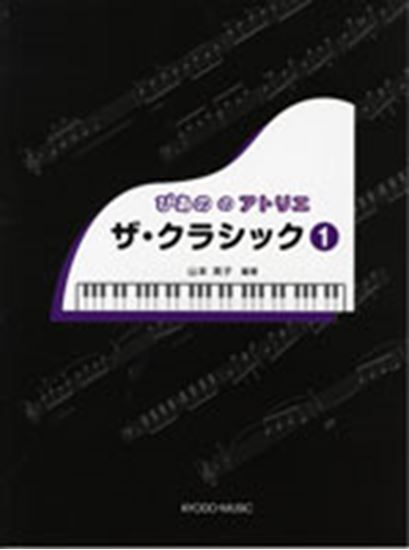
(株)共同音楽出版社

ミュージックランド

(株)リットーミュージック

(株)ヤマハミュージックエンタテインメントホールディングス

(株)ヤマハミュージックエンタテインメントホールディングス

(株)オンキョウパブリッシュ〇

ミュージックランド

ミュージックランド

(株)ドレミ楽譜出版社

(株)シンコーミュージックエンタテイメント

(株)ドレミ楽譜出版社

(株)ドレミ楽譜出版社

(株)シンコーミュージックエンタテイメント
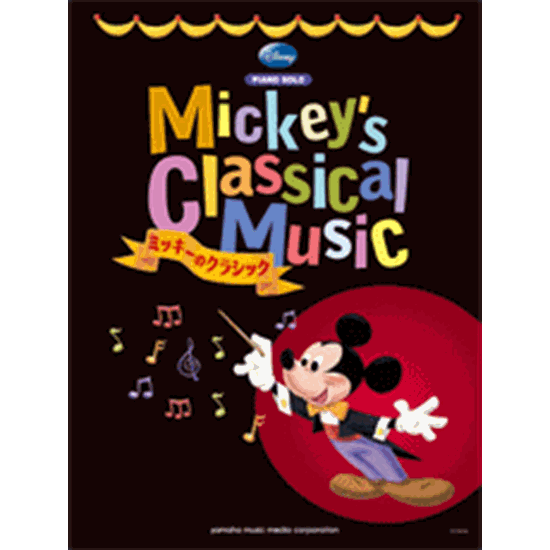
(株)ヤマハミュージックエンタテインメントホールディングス

KMP(ケイ・エム・ピー) ケイエムピー

(株)シンコーミュージックエンタテイメント

(株)シンコーミュージックエンタテイメント

デプロMP

(株)シンコーミュージックエンタテイメント

(株)ドレミ楽譜出版社

(株)ヤマハミュージックエンタテインメントホールディングス

ミュージックランド

(株)共同音楽出版社

ミュージックランド
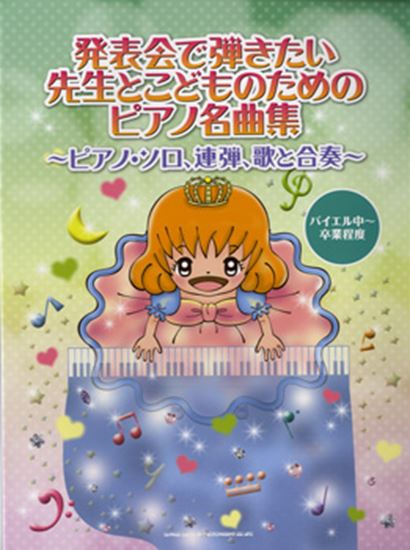
(株)シンコーミュージックエンタテイメント

(株)ヤマハミュージックメディア

ミュージックランド

ミュージックランド

(株)ドレミ楽譜出版社

(株)シンコーミュージックエンタテイメント

(株)シンコーミュージックエンタテイメント

(有)ティーダ

(株)シンコーミュージックエンタテイメント

ミュージックランド

(株)ヤマハミュージックエンタテインメントホールディングス

ミュージックランド

(株)ヤマハミュージックエンタテインメントホールディングス

(株)シンコーミュージックエンタテイメント

ミュージックランド

ミュージックランド

(有)中央アート出版社

(株)ドレミ楽譜出版社

Musikverlag Doblinger

Peters






